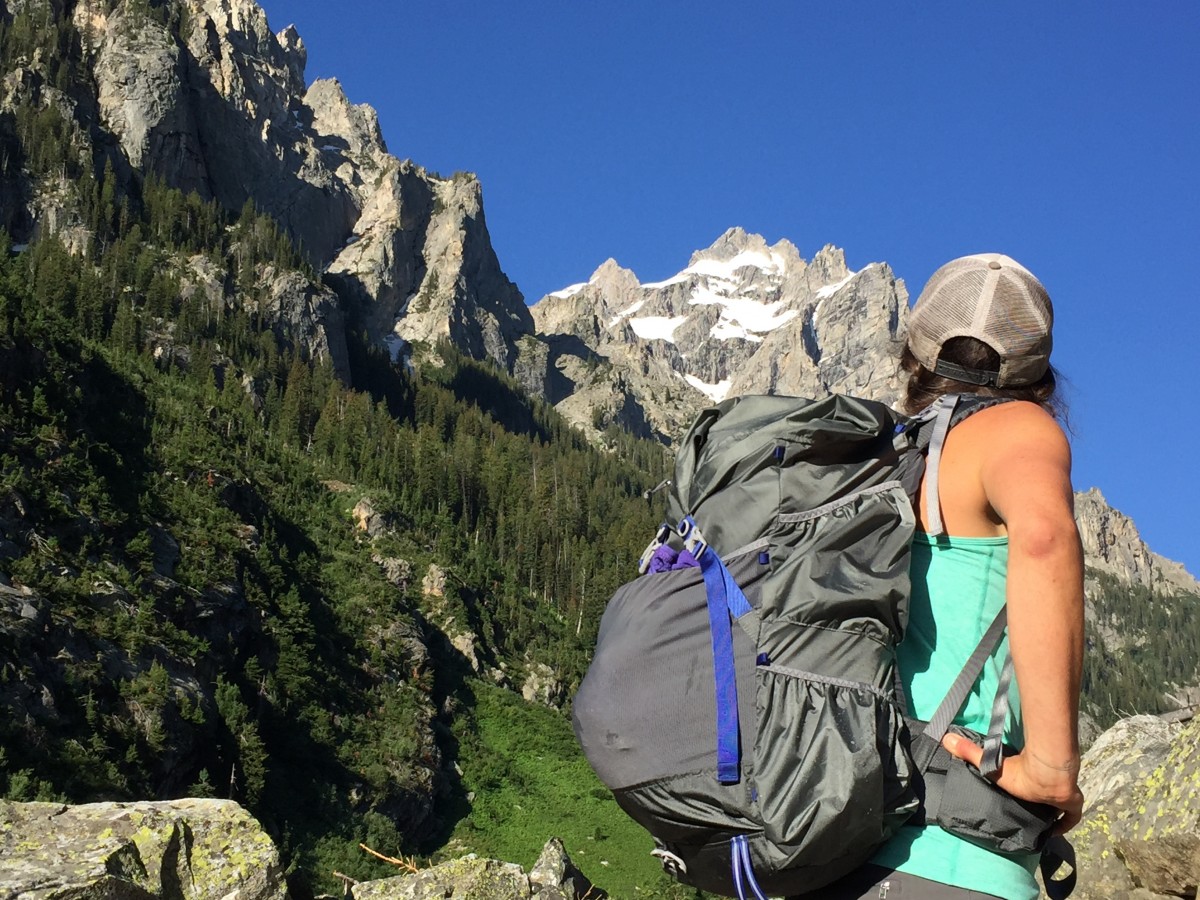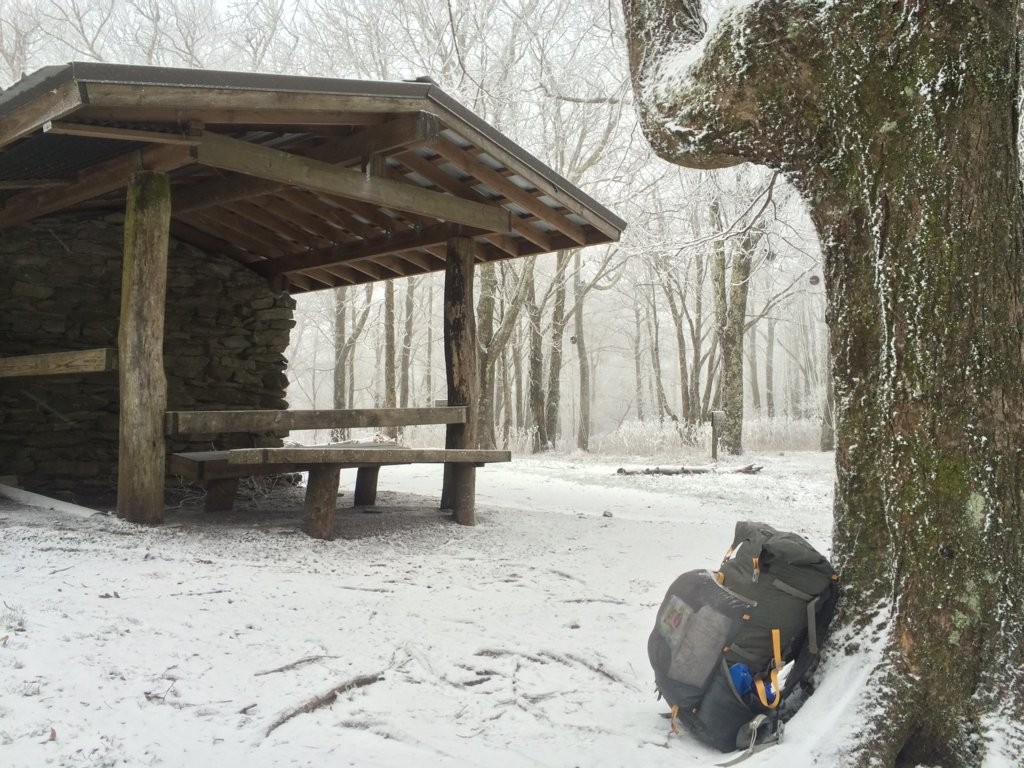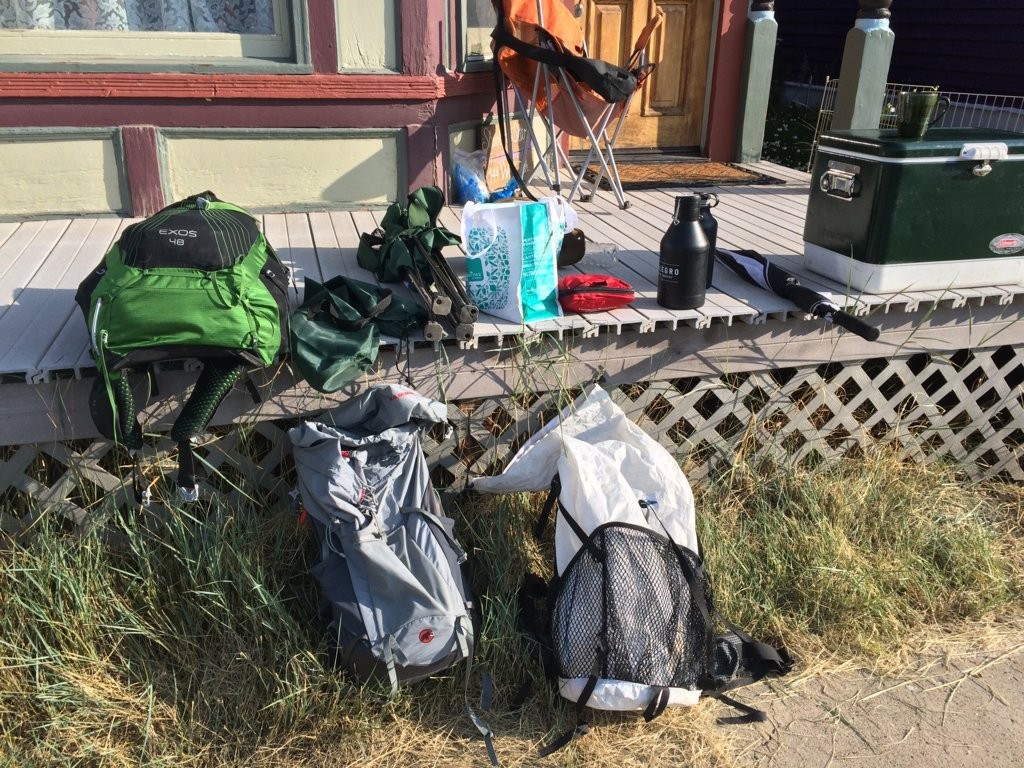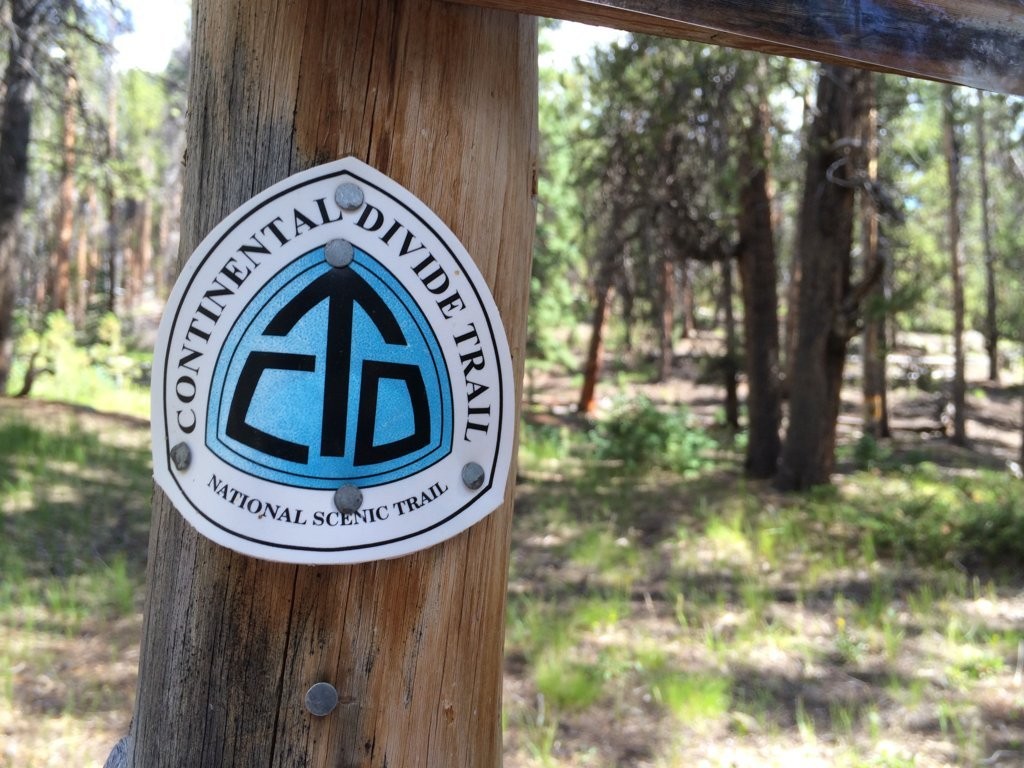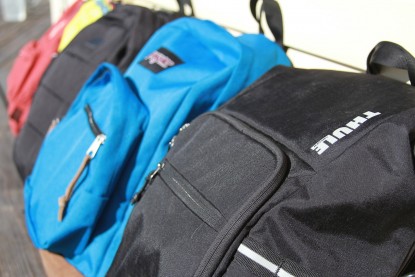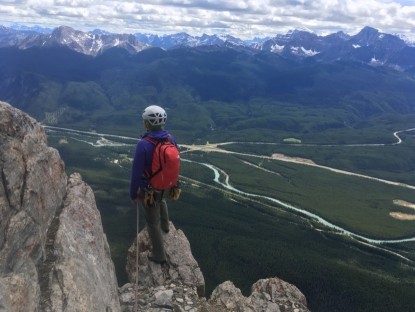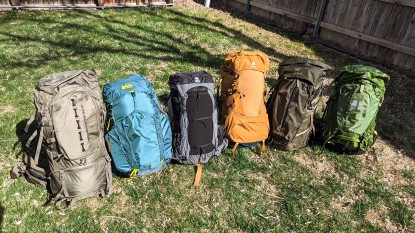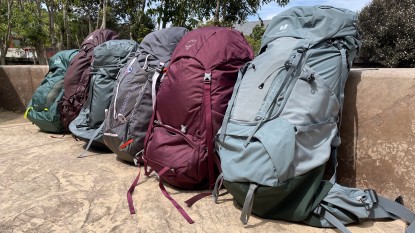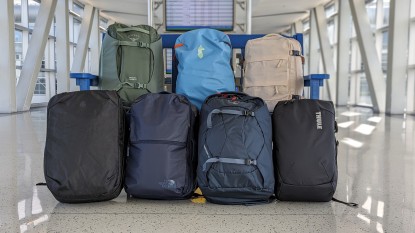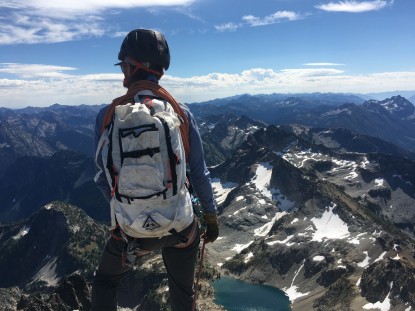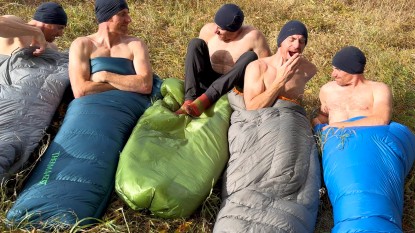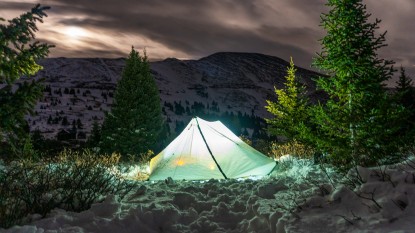Once you've tasted the freedom of an ultralight set-up, it's hard to imagine going back to a four or five-pound pack, no matter how supportive and high-tech the suspension system is. With an ultralight kit, you can carry under 30 pounds for multiple days in the backcountry, allowing for more time to enjoy the wilderness and less time complaining about your aching knees. Needless to say, we are sold.
This review covers packs that are under two and a half pounds, with a weight-to-volume ratio of no more than 0.7 ounces per liter. This dramatic drop in weight from a normal pack often means that things like storage and durability are sacrificed. For reference, most of the packs we test in our regular backpacking backpack review weigh between four and six pounds and have a main compartment volume of 60 liters or so. For most ultralight packs, you'll need ultralight gear and practiced packing methods to keep your kit at or under around 30 pounds to maintain reasonable comfort.
This review is one in a series of reviews highlighting gear used by lightweight and ultralight backpackers and thru-hikers. To complete your ultralight setup, check out our hands-on reviews of ultralight tents and ultralight sleeping bags.
Transitioning to an ultralight kit can be tricky. We highly recommend testing your kit before hitting the trail to ensure things work well together. In general, we found that keeping your load between 15 and 30 pounds with these packs is the optimal place for comfort and enjoyment. This means slimming down other aspects of your Big Four beyond simply your pack (i.e., shelter, sleeping bag, sleeping pad). All the information provided in this article is meant to help you with your decision-making process as you find your way to the ideal lightweight pack.
Types of Ultralight Backpacks
We will start by discussing the different types of ultralight packs: Simple Frame, Tensioned Air Frame, and Frameless.
Simple Frame
Simple frames come in a couple of varieties, and for this category, we define a simple frame as a frame that is not arc-ed and held in tension to create airspace at your back. Think of a simple foam panel with aluminum stays for additional support. At the simplest end of the frame spectrum is the throwback design of two independent flat aluminum stays placed vertically in the back panel. More advanced are the upside-down U-shaped frames in tubular aluminum or carbon/Delrin. Simple frames prevent torso collapse in the pack body and help load transfer to the hip belt.
Tensioned Air Frame
Several of the packs we tested incorporate a tensioned frame that is not only designed to carry loads well but creates space at your back for airflow. These packs are simplified, similar to the models you may find in our backpacking pack review. Many hikers that tend to sweat a lot or whose adventures are primarily in warm to hot seasons of the year prefer a pack with ventilation between a potentially sweaty back and the backpack. In addition to carrying heavier loads more comfortably, a tensioned frame creates a ventilated airspace between your back and your pack's body.
Frameless
Many enthusiasts carry a smaller pack for very light loads than those we tested here. With overall loads of less than 15 pounds, a frame becomes less important for carrying comfort. But in this review, we focused on packs capable of carrying loads up to 30 pounds when necessary.
Best Uses for Ultralight Backpacks
Seems fairly simple, right? You'll find these ultralight packs perfect for you if your backpacking adventures focus more on covering the miles in unburdened comfort and less on carrying lots of kit and luxuries for camping. In addition to the main compartment, lots of external storage provides quick access to food and important clothing layers while on the go.
Ultralight Backpacking
Ultralight backpacking is all about minimalism and efficiency, carrying just the right amount of the best gear to stay safe, warm, and happy while maximizing your trail time. Most experienced thru-hikers and ultralight enthusiasts have developed three-season backpacking kits with a base weight of 7 to 11 pounds. At the lighter end of this spectrum, many forgo a stove for cooking. At the heavier end are folks that cook some of their meals, carry a few extra warm clothing layers, and have a few luxury items like a camera or Kindle. Add in consumables, and total pack weights are often in the high teens or low 20s. When our lead tester packed for a wintertime 250-mile chunk of the Appalachian Trail, his base weight came in at 13 pounds.
Lightweight Backpacking
We define lightweight backpacking and any backcountry travel with a base weight between 13 and 20 pounds. Most novice backpackers seeking to reduce their loads to the lightest possible weight (without compromising their safety or spending a few thousand dollars on equipment) fall into this realm. It is quite common for relatively new folks gearing up for a thru-hike of a long trail to develop a kit weighing around 13 to 15 pounds. You can pull this off quite affordably. With a base weight in this range, you'll commonly carry 25 pounds once you add food and water. If this is your style, an ultralight pack with a simple frame or tensioned frame for support is the perfect choice.
Thru-Hiking
Thru-hiking, or tackling one of the many popular long-distance trails like the Pacific Crest Trail or Appalachian Trail, is no different than ultralight and lightweight backpacking described above. With the exception that the time spent carrying your house and home on your back is measured in months rather than days or weeks. While paring down your kit to the lightest safe weight for you is key to maintaining higher comfort during those long days, so is the ability to carry a substantial load when necessary. In sections of the Mojave desert in Southern California, PCT hikers need to carry six or more liters of water for a few days. On long trails, it is also not uncommon to carry a week's food or more while hiking through some of the more remote terrain.
Backpack as Part of a System: The Big Four
We talk a lot about the Big Four when selecting your backpacking kit. The four things in question are your shelter, sleeping bag and pad, and pack. For most backpackers focused on hiking with very light loads, these are the four heaviest single items carried. The most important measurement is base weight to define some general weight ranges for lightweight and ultralight backpacking kits. Base weight is defined as the total weight of the equipment commonly carried on your back, not including the weight of consumables like food, cooking fuel, and water.
Lightweight System
We define a lightweight backpacking kit as a base weight of 20 pounds or less. It is ubiquitous for thru hikers, both new and experienced, to hit the big trails with a 13 to 15-pound base weight. An excellent goal for selecting the Big Four items is no more than eight pounds.
Ultralight System
We consider carrying a base weight of 12 pounds or less to be ultralight backpacking territory. Our lead tester carries a 13-pound base weight in winter that includes a few “heavy” luxury items. Most of our ultralight testers' three-season base weights are around seven to nine pounds. Counting just the Big Four, five pounds total is the generally-accepted upper limit.
The Big Questions
As you start searching for the right ultralight pack for your adventures, there are some important questions to mull over that can lead you toward identifying your best options.
What Volume?
Two trends in the outdoor adventure world are contributing to both thru-hikers and backpackers carrying smaller backpacks than before. Compared to years past, we often carry less equipment, and what we do select is more technologically advanced, multipurpose, and much lighter. Years ago, it was not uncommon to carry a 65-liter pack with a 40 or 50-pound load for a week out in the backcountry. Nowadays, that is almost unheard of in serious backpacking circles. Most ultralight folks are leaning toward packs with a main compartment volume that hovers around 40-50 liters with up to ten liters of additional storage on the outside of the pack.
Even still, many folks prefer a pack that errs on the side of larger rather than smaller. It's nice to have more room for big food loads when necessary and the ability to scale up your base weight for winter. Our lead tester usually rolls with a seven-pound base weight but scales up to 13 pounds for winter. For those looking to have more space, we tested many ultralight backpacks with larger capacities as well. They can expand to fit a week's worth of food or compress to carry on shorter missions with less gear.
Need to Carry a Bear Canister?
Your chosen volume will also depend on whether you'll need to carry a bear canister. If you are hiking in California, say you're on the PCT or the JMT, you need a pack that will accommodate a bear-proof canister for your trips in the Sierra. We tried out each of these packs with a BearVault BV500, the most common size bear canister carried by thru-hikers on the John Muir or Pacific Crest Trails. In some places, bear cans are required by law on these trails, so check local regulations before heading out so you don't get an unwanted visitor in the middle of the night.
Smaller bear canisters are available, but it can be challenging to fit food for a week (as well as your cook kit and fragrant toiletries) into these smaller cans. Increasingly, bear canisters are also a great idea on the Georgia to Great Smoky Mountains section of the AT and again in New York and New Jersey. Canisters are also required by law in at least one short section in Georgia if you stop to camp there.
Do You Want a Lid?
Another consideration when you're thinking about the volume of your ultralight backpack, is whether or not you want a lid. A lid or a “brain” is a traditional part of backpacking packs. This pocket on top serves several purposes but adds a fair bit of weight relative to storage space. Many lightweight pack manufacturers forgo a lid in their designs. Some lids are removable, so you can strip them off to save weight for longer hikes or leave them on for convenience on shorter missions.
An adjustable lid is also a perfect way to strap bulky but light items to the outside of your pack. You can capture your closed-cell foam sleeping pad or even a bear can under the lid. Of course, that's not the only spot for stashing large items, and many of the packs we tested have a plethora of straps and lash points on their outsides. Carrying a climbing rope is one of the few applications that a lid handles much better than side or bottom lashing straps.
How Much Weight Do You Usually Carry?
Ultralight packs come with recommended upper weight limits of gear they can carry without becoming damaged or distressingly uncomfortable. When considering what pack to buy, consider how much weight you think you'll typically be carrying to get a pack that will be plenty comfortable.
That said, you may not know how much weight you will usually carry, or you may plan to carry light loads sometimes and medium loads other times. In this scenario, you have three options: 1) Choose a do-it-all pack that carries both sizes comfortably but weighs a little extra. 2) Buy two separate packs to use with light loads and medium loads. 3) Decide that you're willing to sacrifice comfort when carrying either lighter or heavier loads.
Most of our testers with many thousands of miles under their feet prefer the compromise of choosing a pack with a frame that is about half a pound or so heavier than the lightest available. Our favorite packs were the ones that were very comfortable with both light loads and medium loads. Our testers were happy to carry a little extra weight for added comfort when their packs were loaded into the 20s.
Other Considerations
There are many other features you can find or add to an ultralight pack. Some of these features are specific to where you live or will be backpacking, so not everyone will need to consider them.
Waterproof Cuben Packs
While we usually recommend using both a pack liner and a rain cover, as well as waterproof stuff sacks, when your trips take you to predictably rainy areas, some packs offer much greater water resistance than others. If you anticipate hiking through some rain, look carefully at the pack's materials, seams, and weak points to find out if it will be waterproof — or at least water resistant. Depending on what items you store in the external pockets, you may still want a rain cover. Additionally, your most important items inside — sleeping bag and puffy jacket, for instance — should be in waterproof stuff sacks.
Air Flow Suspension
Let's face it, some of us are very sweaty, not only when it's hot outside. If this is true for you, we'd recommend choosing a pack with a tensioned frame system that creates airflow between your ultralight backpack and your back and shoulders.
Conclusion
Armed with this information, we hope we've helped point you in the right direction as you seek the ideal ultralight pack for your next outing. We also hope that this explains the importance of the backpack as a part of a larger system — along with a sleeping pad, sleeping bag, and shelter. Thinking of the Big Four together helps to dial in your appropriate base weight as you head down the ultralight path. These packs will work better when combined with other ultralight equipment, though these bags alone are a step in the right direction. Happy trails.

